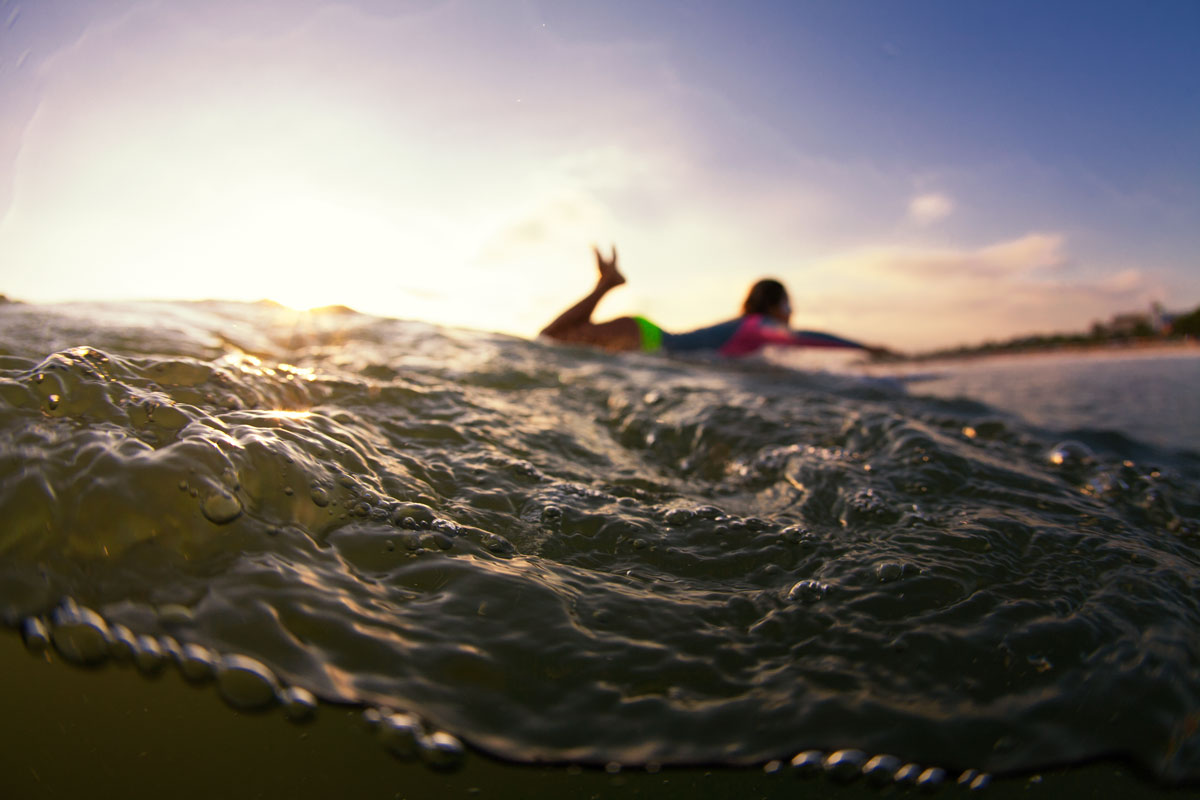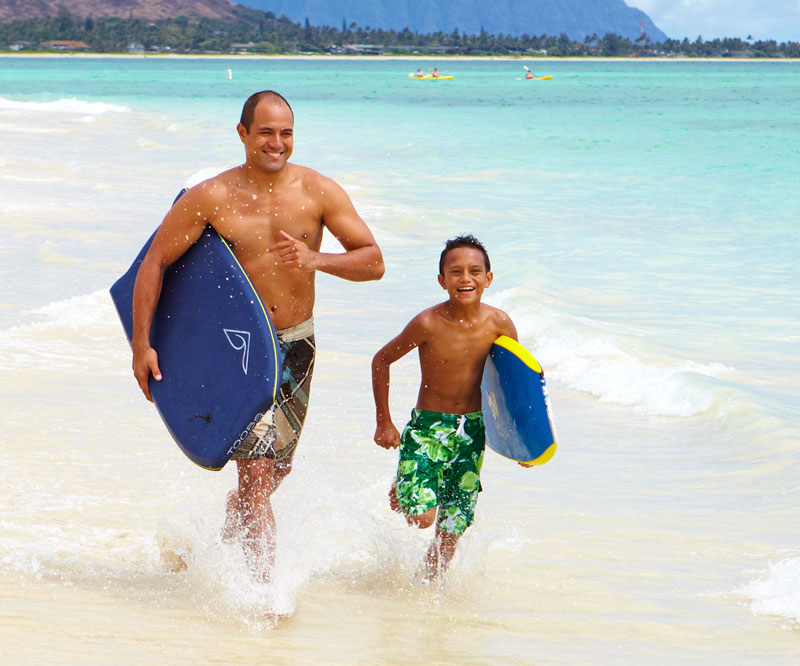
Surfers, Swimmers – Now Hear This!
It goes without saying that water sports are very popular in Hawaii. After all, being surrounded by the ocean presents the unique opportunity to enjoy activities like surfing, swimming, body surfing, body boarding, paddling and more year-round.
While all of these activities are fun, Dr. John Cho, an ear, nose and throat specialist at Straub Medical Center, shares some knowledge on how to prevent and treat common water-induced ear diagnoses like surfer’s ear, swimmer’s ear and perforated ear drums.
Swimmer’s Ear
Swimmer’s ear, or otitis externa, can occur when water remains in the outer ear after a swimming session. Combined with a warm environment, this excess water creates a fungal-friendly living place.
Common germs include bacteria, such as Pseudomonas aeruginos, and fungus, like Aspergillus niger.
Some symptoms of swimmer’s ear can include redness, itchiness, pain, temporary hearing loss and pus-like fluid draining from the ear.
To prevent getting swimmer’s ear, Cho suggests that water-enthusiasts:
- Wear customized ear plugs in the water.
- Take certain medications.
- Visit an ear, nose and throat specialist for periodic cleaning.
Once the ear canal swells and debris begins to accumulate, the germs that create swimmer’s ear are very resilient and can be difficult to get out.
Following a physician evaluation, treatment consists of cleaning the external ear, pain medication and no water exposure for five to seven days.
Surfer’s Ear
Surfer’s ear, or exostosis, occurs due to a constant exposure to cold water and wind, which makes the condition very rare in Hawaii. This combination encourages bony developments to grow in the ear, therefore restricting the ear canal. This process cannot be reversed without surgery and may result in hearing loss and a predisposition to ear infections.
To prevent surfer’s ear, Cho says you should:
- Avoid extremely cold water. Wetsuits do not protect the ears.
- Wear customized ear plugs in the water.
- Wear swim caps or neoprene hoods in the water.
Treatment consists of monitoring the ear, maintaining ear health and sometimes surgery. Maintenance and cleaning of the ear are huge parts of the treatment process because without this step, ear infections can become much more frequent.
Perforated Ear Drum
A perforated ear drum can happen in water sports when traumatic forces act upon the ear. For example, if an ear is slapped by a wave, the pressure could cause the ear drum to rupture, which makes it more susceptible to infection.
Treatment usually consists of letting the ear heal on its own. However, having an ear, nose and throat specialist monitor the status of the ruptured ear drum is extremely important to ensure the ear is healing properly.
The time spent out of the water will depend on the severity of the rupture and the healing process.
Published on: January 11, 2016




